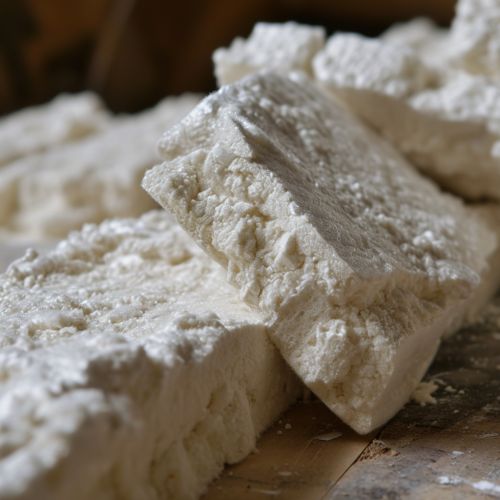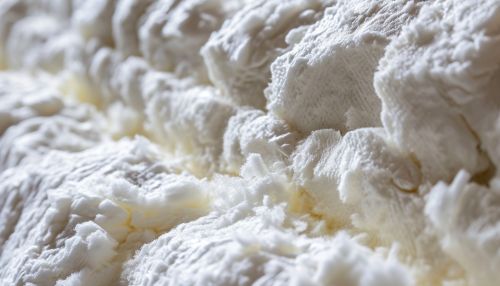Polyisocyanurate
Introduction
Polyisocyanurate (also referred to as PIR) is a type of plastic commonly used in the construction industry due to its excellent thermal insulation properties. It is a thermoset polymer that is formed by the reaction of isocyanate and polyol. The reaction results in a rigid cellular structure that is highly resistant to heat and flame. Polymers such as polyisocyanurate are essential in various industries due to their versatility and durability.


History
The development of polyisocyanurate dates back to the 1930s when Otto Bayer and his team at IG Farben in Germany were researching the use of isocyanates in polymer production. This research led to the development of polyurethane, a precursor to polyisocyanurate. However, it was not until the 1950s that polyisocyanurate was first produced commercially. The material quickly gained popularity due to its superior insulation properties, especially in the construction industry.
Production
The production of polyisocyanurate involves the reaction of an isocyanate, such as methylene diphenyl diisocyanate (MDI), with a polyol. The reaction is exothermic, meaning it releases heat, and results in the formation of a rigid cellular structure. The cells in this structure are filled with a low-conductivity gas, which gives the material its excellent thermal insulation properties. The production process is typically carried out in a continuous lamination process, where the reacting mixture is applied to a substrate and allowed to expand and cure.
Properties
Polyisocyanurate is known for its excellent thermal insulation properties. It has a low thermal conductivity, which means it is highly effective at preventing heat transfer. This makes it an ideal material for use in insulation applications, particularly in the construction industry.
In addition to its thermal properties, polyisocyanurate also has good mechanical properties. It is a rigid material that is resistant to compression and has good dimensional stability. This means it can maintain its shape and size under varying conditions, making it suitable for a wide range of applications.
Polyisocyanurate is also highly resistant to fire. It has a high ignition temperature and produces a low amount of smoke when burned. This makes it a safer choice for insulation in buildings, particularly in high-risk areas.
Applications
Due to its excellent thermal and mechanical properties, polyisocyanurate is used in a wide range of applications. One of the primary uses of polyisocyanurate is in the construction industry, where it is used as a thermal insulation material. It is commonly used in the insulation of roofs, walls, and floors in both residential and commercial buildings.
In addition to its use in construction, polyisocyanurate is also used in other industries. For example, it is used in the automotive industry for thermal insulation in vehicles. It is also used in the aerospace industry for insulation in aircraft and spacecraft.
Environmental Impact
Like all plastics, polyisocyanurate has an environmental impact. The production of polyisocyanurate involves the use of isocyanates, which are hazardous chemicals. These chemicals can have harmful effects on the environment if not properly managed.
However, the use of polyisocyanurate in insulation can help to reduce energy consumption and greenhouse gas emissions. By improving the energy efficiency of buildings, polyisocyanurate can help to mitigate the impacts of climate change.
Future Developments
Research is ongoing into the development of more sustainable and environmentally friendly alternatives to traditional polyisocyanurate. This includes the development of bio-based polyisocyanurates, which are made from renewable resources. These materials have the potential to reduce the environmental impact of polyisocyanurate production, while still providing the same excellent thermal insulation properties.
